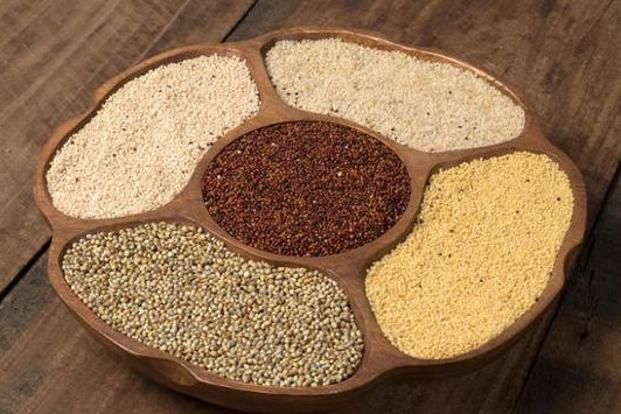Millets 101: Why Switch To Millets When You Like Rice?
Feb 20, 2019 • 35 views

Since the early ages, rice has been a staple for a large number of consumers across the globe.
However, increased consumption of rice has also resulted in increased risk of many health conditions such as type 2 diabetes, certain cardiovascular diseases, etc. So you can say that it is a wise decision to switch to a much healthier option if you can. And this is where millets come into play.
Since the prehistoric times, millets were produced in large amounts compared to rice. Millets are often used as animal fodder but when the world finally realized its vast health and nutritional potential, it soon made a comeback into the human consumption market.
For people looking to switch to a healthier option, millets can prove to be beneficial. Here’s why switching to millets is a better decision:
1.Millets are much more rich in nutrient composition compared to rice
Millets are grain crops similar to rice but carrying high levels of various nutrients and minerals which are essential for the human body such as magnesium, millets contain much higher amounts of fiber along with good quality protein and high essential amino acid content.
The iron content of millets is 15.2mg compared to 0.7mg of rice. Calcium content of millets is 31mg compared to 10mg of rice.
2.They help in managing diabetes
Millets can be called the miracle crop when it comes to fighting diabetes. With no gluten, millets are ideal for those who are gluten intolerant and for those with celiac diseases and diabetes. The magnesium content in millets stimulates the level of insulin in the body and helps to maintain a good blood sugar balance.
3.They help in fighting heart diseases
Millets don't just help manage diabetes but also cardiovascular diseases as postprandial hyperglycemia.
4.They don’t demand much when it comes to cultivation either
Millets are a climate-resilient food crop compared to the others, hardly needing any extra chemical fertilizers or irrigation. They can grow in pretty arid conditions. The government in various states of India has been trying to empower famers to cultivate more millet crops.
5.They help in weight loss
Millets like ragi, bajra, and jowar, are very high in fiber content and very good when it comes to the protein content as well. The body requires time to digest the food i.e., the glycemic index in our body is low. Therefore, it has the ability to have high satiety level. Replacing refined carbohydrates with millets, well, at least 1/3rd of your grain intakes, is essential and highly recommended for any weight loss program.
6.‘Cause why not?!
Comparing the health benefits of millets and rice, it is quite clear why it is a good idea to switch to millets. Also millets are good detoxifiers compared to rice.
Here are the different types of millets:
1.Jowar/Sorghum
It has a component called policosanols which helps in controlling cholesterol and is also good for people who are weight intolerant.
2.Ragi
Having a high protein and essential amino acid content, it is good for brain development in children.
3.Bajra
Daily consumption of this millet is recommended for a healthy diet as it contains the perfect nutritional constituents such as calcium, magnesium, iron, proteins, minerals and fibers.
4.Foxtail millet
Strengthens immunity and helps in managing blood sugar levels.
5.Barnyard millet
The best millet for weight loss. Comprising of a high fiber content along with rich calcium and phosphorus content which help in having healthy bones and bone development.
6.Proso millet
Commonly used as bird feed, it is has a low glycemic index which makes it good for weight loss.
7.Little millet
B-vitamins, calcium, iron, zinc and potassium are dormant in these so called “little” millets.
So, now it’s down to you. How about a healthier lifestyle and a brighter you being your New Year resolution for 2019?

